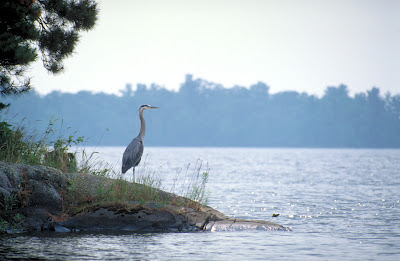The term “food web” is used to describe the intricate relationships between the many different plants, animals, and organisms that can exist in small or large areas. Understanding food webs in specific environmental locations, such as in one or more of the Great Lakes, can help researchers and communities better respond to changes in those delicate systems. Invasive species are just one example of a potential influence that can drastically alter a food web and have substantial impacts on native environments.
Category:
GLRRIN Lake Michigan partners examine future of Lake Michigan food webs
April 11th, 2012 by Irene MilesRecent News
- Coastal communities can tap into IISG resources as they manage beach sand and structures
- It’s time to apply for the 2026 IISG Graduate Scholars Program
- IISG’s Eliana Brown wins 2025 Illinois Extension Excellence Award
- We’re hiring eight interns for summer 2026
- In 2026, IISG intends to fund 10 research projects focused on coastal concerns
IISG Instagram
✨ Start Your New Year with Great Lakes Learning! ✨
Kick off 2026 by exploring the Center for Great Lakes Literacy Resource Library. It’s your one-stop hub for lesson plans, activities, and tools to bring Great Lakes science into your teaching setting.
Visit the link in bio to dive in today!
#TeachingTuesday
#GreatLakes #NewYearNewResources

Join us for a hands-on Project WET Make-and-Take Workshop in Chicago!
📅 When: March 12, 2026 from 9:00 AM – 3:30 PM CT
📍 Where: 200 S Wacker Dr., Chicago, IL
💲 Cost: $25 (includes classroom-ready activity kits, lunch & refreshments)
🗓️ Registration closes February 26.
✅ Open to 3rd–8th grade formal & informal educators
✅ Earn 6 PD hours
✅ Leave with ready-to-use water education kits aligned to Common Core & NGSS
👉 Don’t miss out—space is limited!
Learn more and register at the link in bio.
@thengrrec

From supporting cutting-edge research to empowering educators, students, and Great Lakes communities, 2025 was a year of collaboration, learning, and impact.
Thank you to our partners, researchers, educators, and community members who made it all possible. Here’s to another year of protecting, exploring, and sustaining the Great Lakes!

Register Now for HASTI 2026! The early bird registration rate expires tomorrow!
We’re excited to be presenting The Watershed Game at the conference. The game is a hands-on activity that helps educators and students explore water quality, land use, and community decision-making.
✅ Don’t miss this opportunity to connect with fellow educators and bring new tools to your classroom!
📅 Event Details & Registration at the link in bio.

Categories
- Aquaculture
- Aquatic Invasive Species
- Buoys
- Climate Ready Communities
- Coastal Resilience
- Director's Blog
- Education
- Featured
- Fellowships
- Fisheries
- Funded Research
- Funding
- Great Lakes Cleanup
- Great Lakes Data
- Healthy Waters
- Internships
- Jobs
- K-12 Education
- News
- Photos
- Program
- Recreation & Tourism
- Resources
- Sea Grant Scholars
- Stormwater & Green Infrastructure
- Sustainable Community Planning
- The Helm
- Uncategorized
- Video
- Water Resource Economics

